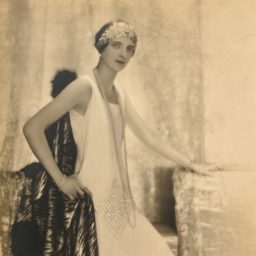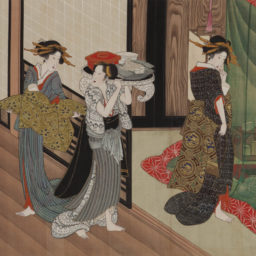In the year 1900, at a time when most French jewelers were looking back to the traditional European forms of the previous century as the basis for their designs, the Maison Chaumet ventured into uncharted territory. Joseph Chaumet, then at the helm of the house and a master of Belle Époque jewelry design, instead turned to distant lands for far more exotic sources of inspiration.
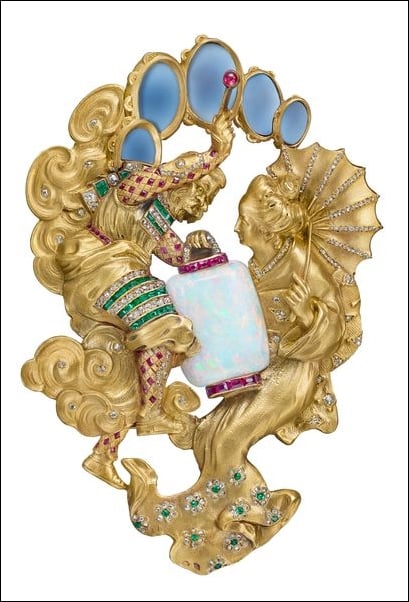
The Raijin broche japonaise. Courtesy of Chaumet.
The eclectic design of a delicate brooch he created in homage to Raijin, the god of rain and thunder in Japanese mythology, illustrates the nascent appreciation of Japanese themes and aesthetics at Chaumet. “Westernized,” or interpreted in a manner familiar to a Western clientele, the cloud-riding deity was delicately carved out of yellow gold, and is depicted holding up an opal lantern to a kimono-clad woman bearing a sunshade under heavy clouds of blue agate.
Japanese ornamental motifs first began to enter the repertoire of French jewelers after Japanese creations and techniques were debuted at Japan’s pavilion at the 1867 Paris World Fair. At Chaumet, the historic jeweler founded in 1780, the influence of Japan’s aesthetics was manifested in earnest at the turn of the century when Art Nouveau, a style born out of the growing interest in “Japonisme,” began gaining in popularity.
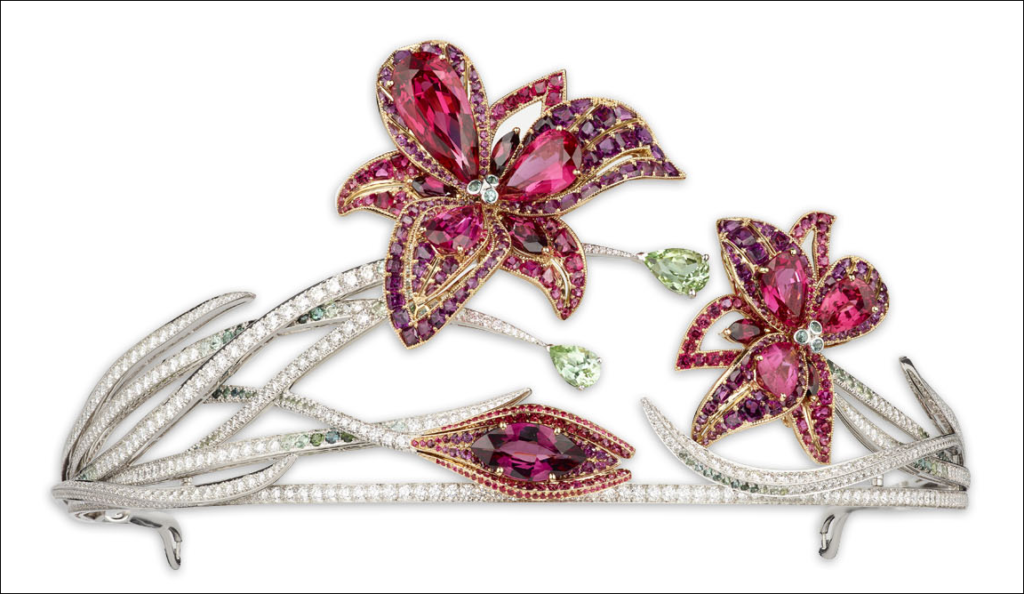
Diadème Passion Incarnat, courtesy of Chaumet.
The precious “Raijin” brooch will be showcased this summer in an exhibition titled “The Worlds of Chaumet: The Art of Jewelry since 1780” at Tokyo’s Mitsubishi Ichigokan Museum as Chaumet continues its tour of the Far East through September 17.
The show features some 300 objects, including royal jewelry dating back to the 18th century, archive drawings, and period photographs that trace over two centuries of the history, culture, and know-how of the jewelry house, with a special section devoted to Chaumet and Japan.
“France has had a longstanding relationship with Japan, and for the Maison Chaumet this show was an opportunity to demonstrate its curiosity for the exotic,” said Henri Loyrette, the famed former director of both the Louvre and the Musée d’Orsay, who curated the show. “That curiosity continues today to inspire Chaumet’s contemporary creation,” he added.
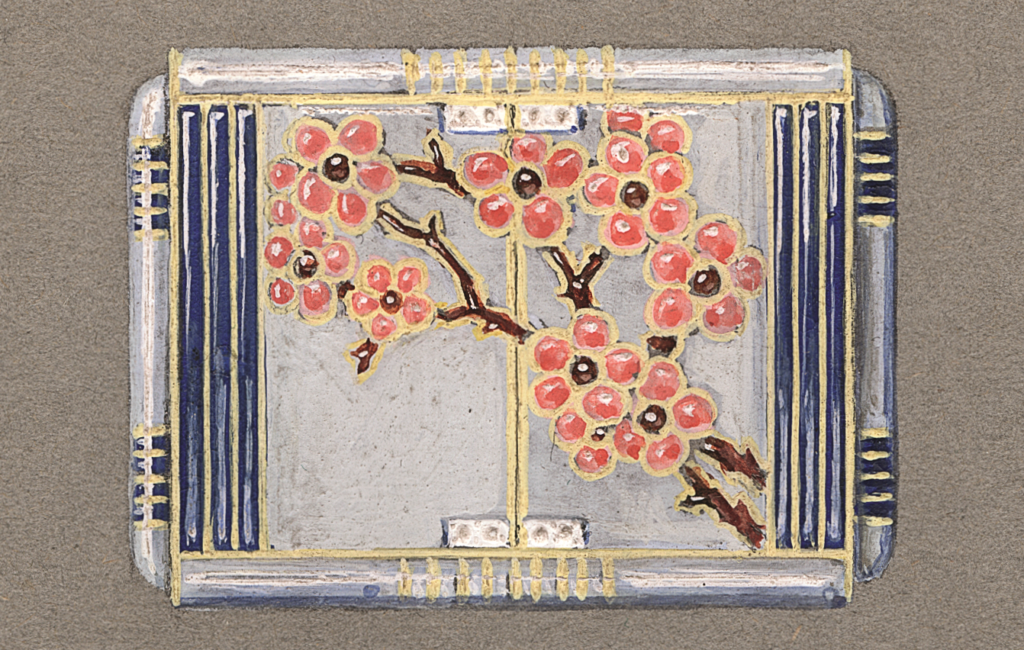
A drawing of cherry blossoms, (1925). Courtesy of Chaumet.
Dripping with a jeweled flowering branch inspired by cherry blossoms and wisterias, a new high-jewelry necklace was designed for the show to pay tribute to the Land of the Rising Sun with its Japanese-influenced palette of black onyx, red rubies, and rhodolite garnets.
The show is also rich in historically significant pieces, such as the tiara that Napoleon gave Pope Pius VII after his 1804 coronation. Recently restored by Chaumet, the piece is on a rare loan from the Vatican. The spectacular 114-carat emerald on the headdress alone makes a trip to the museum worthwhile.
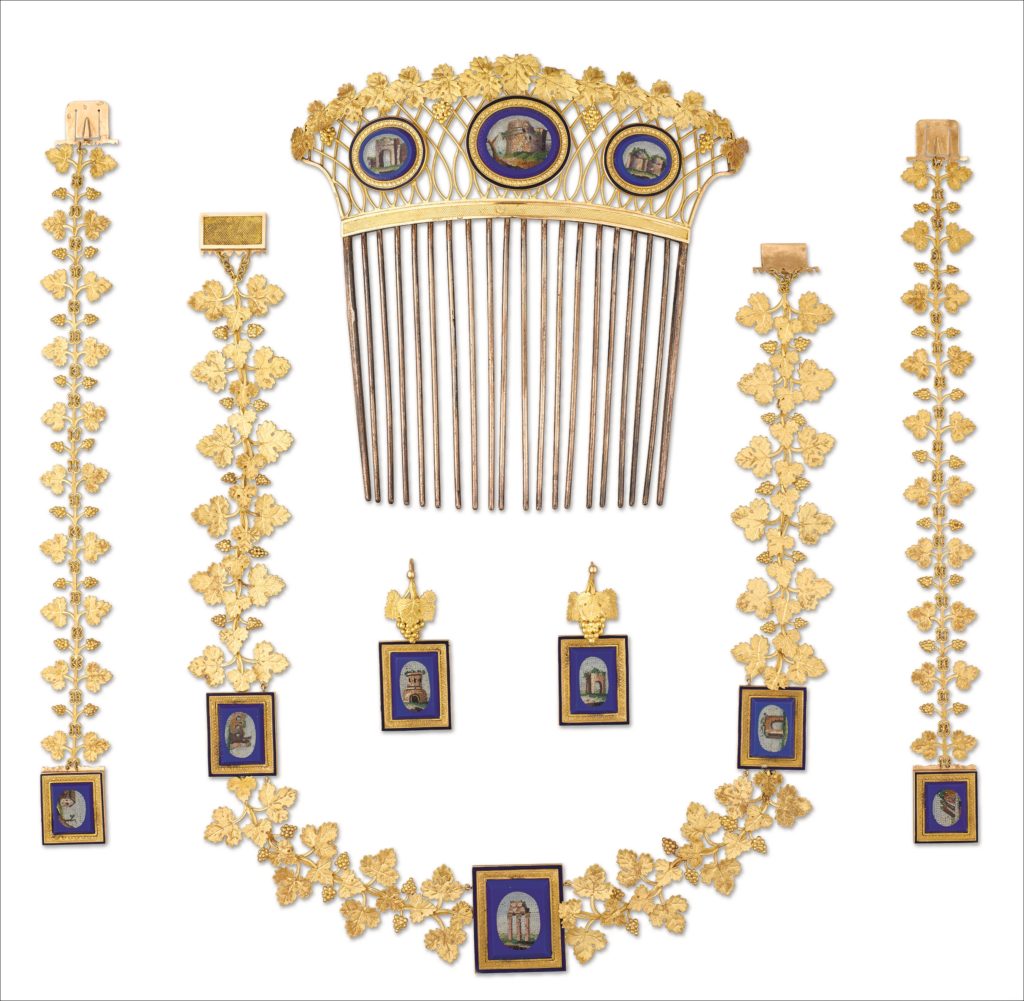
Adornment of the Empress Marie-Louise (1810). Courtesy of Chaumet.
Japan is not the first destination on Chaumet’s tour of Asia—last year, the jeweler made a majestic showing in China with “Imperial Splendors,” an exhibition at the Palace Museum in Beijing’s Forbidden City. While this is the first time Chaumet’s art of jewelry-making is featured in a Japanese art museum, some of the jeweler’s best-known creations, including the Bourbon-Parme platinum-and-diamond fuchsia tiara and the splendid Mary Stuart aigrette tiara, had traveled to Tokyo in 2007 for a show dedicated to the jeweled headpieces.
“Chaumet has always had an influence on Japan, just as Japanese arts have inspired Parisian jewelry techniques and motifs,” said Akiya Takahashi, director of the Mitsubishi Ichigokan Museum. “We learned the notion of wearing ‘luxurious jewelry’ from the West.” With its sumptuous exhibition, Chaumet is making sure that lesson remains very much front-of-mind today.







